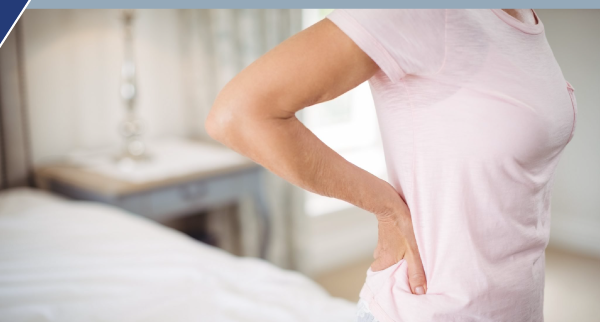
Did you know that 80% of lower back pain symptoms are more prevalent in women than in men?
Your back performs key functions in the body. It works to protect body tissues, provide structural support and facilitate movement. Your lower back supports the weight of the upper half of your body. One of the key functions of the back is to protect the organs found in the abdomen and pelvis. It provides cover for the spinal cord and nervous system.
Bending, rotating or extending involves moving your lower back. Any injury to the lumbar region of your lower back can be quickly noticeable. The ligaments, tendons, muscles, and spine can be injured, causing long term complications and pain.
Back Pain Mystery
Why do women suffer from back pain more frequently than men? The exact reasons are unclear. However, there are some physical differences between men and women that provide some clues. The result of pregnancy, pelvic structural differences between men and women and hormone levels in women are all key reasons that may account for greater incidents of back pain.
Tailbone Pain
Coccydynia can cause pain when sitting or when performing any activity that creates pressure on the tailbone area. This pain can be a gradual development or can appear after an injury or accident. When you are experiencing coccydynia, your tailbone may hurt while you’re sitting or standing or doing any other type of activity.
Pregnancy and the position of women’s tailbones make this condition five times more likely to affect women than men. Complications in childbirth, when the baby’s head may be putting pressure on the coccyx, can aggravate the tailbone area and cause pain. Typically, coccydynia shows up in women in their 40’s. Tailbone pain can go away with treatment or may become a chronic problem requiring long term care.
Osteoporosis
Osteoporosis can cause compression fractures in the spine. Thinning bones can break easily following a sudden movement; anything from a sneeze to a fall can cause a compression fracture which may or may not be accompanied by pain. In some individuals, osteoporosis can be responsible for height loss or the development of rounding in the back.
Nearly 80% of the people with osteoporosis are women, so it stands to reason that back pain due to compression fractures in the spine will affect women in far greater numbers than it will affect men. Women over 45 are at a greater risk of osteoporosis, as well as women who have a family history of compression fractures.
Fibromyalgia
Pain in the neck, hips and back is a typical symptom of fibromyalgia. Hallmarks of this condition include fatigue, joint stiffness and muscle pain. It is unclear how fibromyalgia affects the body; symptoms can appear and disappear in different locations without warning.
Fibromyalgia is often accompanied by irritable bowel syndrome, arthritis and depression. Scientists are unclear why fibromyalgia affects women more than men, but some believe it has to do with hormonal imbalances that are present in ageing women. Fibromyalgia typically presents itself in pre-menopausal women as the levels of estrogen begin to decline.
Spinal Stenosis
Degenerative spondylolisthesis is a condition where one of your vertebrae slips over the one below it. During the course of the movement, your vertebra can aggravate the nerves in your spine and cause pain to shoot down your back and into your legs.
Women are three times more likely to suffer from degenerative spondylolisthesis as a result of genetic makeup. Due to the differences in the structure of the pelvic region, varying levels of hormones and a tendency for low bone density, women are more likely to suffer from this condition. It is primarily seen in individuals over the age of 50 when age-related issues weaken the ligaments and joints surrounding your spine.
Stress Can Contribute to Back Pain
Various other conditions may cause temporary back pain in women. Stress, lack of sleep, depression and other psychological issues may affect muscle tension in the back. Medical conditions such as menstrual cramps, kidney stones, cancer and other diseases may cause back pain to present itself. Treating these underlying conditions may alleviate back pain completely. In addition, physical therapy, stretching and exercise can help to strengthen back muscles and help improve and maintain flexibility to prevent pain.
Contact us today to schedule your comprehensive appointment and find out how we can put our experience to help heal your back pain.
